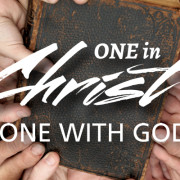Unexpected love: Part 2
At dawn he appeared again in the temple courts, where all the people gathered around him, and he sat down to teach them. The teachers of the law and the Pharisees brought in a woman caught in adultery. They made her stand before the group and said to Jesus, “Teacher, this woman was caught in the act of adultery. In the Law Moses commanded us to stone such women. Now what do you say?” They were using this question as a trap, in order to have a basis for accusing him. But Jesus bent down and started to write on the ground with his finger. When they kept on questioning him, he straightened up and said to them, “Let any one of you who is without sin be the first to throw a stone at her.” Again he stooped down and wrote on the ground. At this, those who heard began to go away one at a time, the older ones first, until only Jesus was left, with the woman still standing there. Jesus straightened up and asked her, “Woman, where are they? Has no one condemned you?” “No one, sir,” she said. “Then neither do I condemn you,” Jesus declared. “Go now and leave your life of sin.” —John 8:2-11
Jesus talks to the woman caught in adultery.
Theodore J. Hartwig
The account of the woman taken in adultery was commonly inserted as past of John’s gospel already by the fifth century. English and German translations included it as part of John’s gospel. Scholars through the ages commented on it and considered it an authentic account of our Savoir’s life. God’s people over the centuries found much to learn from this account.
In recent translations, the account of this woman is included, but with a note that it was not included in the earliest manuscripts of John’s gospel. Yet, most agree that it is an authentic and important account from the Savior’s ministry. In this incident, Jesus makes one of his most precious promclamations. We simply take our place among the believers over the centuries and learn from this account of the Savior;s love for sinners. Whatever its history, we may rest assured that the incident of the woman tajen in adultery happened and that it is among one of the most precious proclamations of the gospel in Jesus’ ministry.
A TEST FOR JESUS
The story introduces three major actors. A fourth person is conspicuous by his absence. Bear in mind that the woman was caught openly in the act of adultery. The man sharing the act with the woman is missing. He may have escaped. He may have been allowed to escape. He may not have been useful for the charge brought against the woman by the law teachers and Pharisees. In their minds, perhaps, her sin was more grievous than the man’s. Whatever happened, these purists were intent on using her to test Jesus.
Jesus’ immediate response is interesting. He bent down and began to write on the ground with his finger. We might wonder why. A possible guess is that he wanted to fill the highly charged silence with activity and bide his time a bit. Then, at the accusers’ insistence that Jesus respond to their question, he aimed his dart directly at their consciences. He knew exactly what to say in these circumstances. Beginning with the person who among them is without sin, he invited them to start throwing stones at her.
His words must have struck their consciences like a thunderbolt. It would have struck us with as much force as it struck them. Without another word, the accusers began to peel off one by one, beginning with the most senior and therefore most qualified candidate to set the tone for everyone else to follow.
JESUS’ DIRECTIVE TO THE WOMAN
Now comes the most eloquent part of the story. Jesus asks a question of the woman: “Has no one condemned you?” “No one,” she responds. She does not offer counter accusations, point her finger at her one-time accusers, or shake her fist at them as the slink away. Her answer suggests that she was repentant.
Another thunderbolt from Jesus, “Neither do I condemn you.” Forgiveness was freely given to an undeserving sinner. In the minds of the purists, however, Jesus may have seemed much too lenient. But his words are a persuasive testimony to the height, width, and depth of the gospel. And, with their inherent power, they engendered a new life in the woman.
Jesus’ follow-up directive thus offers the woman an opportunity to turn from the destructive relationship that brought her before him. It is a beautiful example of gospel-motivated law preaching. In the strength of her forgiveness, Jesus tells the woman that she should leave her life of sin. Forgiveness so freely given is never a license to live as one pleases.
Luther expounded gospel-motivated law obedience beautifully in his explanation to the Ten Commandments in the Small Catechism. He introduced each Commandment with its necessary preamble, “We should fear and love God . . .” Obedience flows from forgiveness and is given selflessly from inner compulsion, and therefore it is pleasing to God.
Thus this story of the woman caught openly in adultery is one of the most beautiful testimonies to both the gospel and the gospel’s fruit of obedience. It also shimmers as one of the four gems from John in this genre of Jesus’ uninhibited association with women.
Theodore Hartwig, professor emeritus at Martin Luther College, New Ulm, Minnesota, is a member at St. John, New Ulm.
This is the second article in a four-part series on the gems of John.
SUBMIT YOUR STORY
Do you have a manuscript, idea, or story from your own life you’d like to share for use in Forward in Christ or on wels.net? Use our online form to share it to our editorial office for consideration.
SUBSCRIBE TO FORWARD IN CHRIST
Get inspirational stories, spiritual help, and synod news from Forward in Christ every month. Print and digital subscriptions are available from Northwestern Publishing House.
Author: Theodore J. Hartwig
Volume 103, Number 2
Issue: February 2016
Copyrighted by WELS Forward in Christ © 2021
Forward in Christ grants permission for any original article (not a reprint) to be printed for use in a WELS church, school, or organization, provided that it is distributed free and indicate Forward in Christ as the source. Images may not be reproduced except in the context of its article. Contact us



